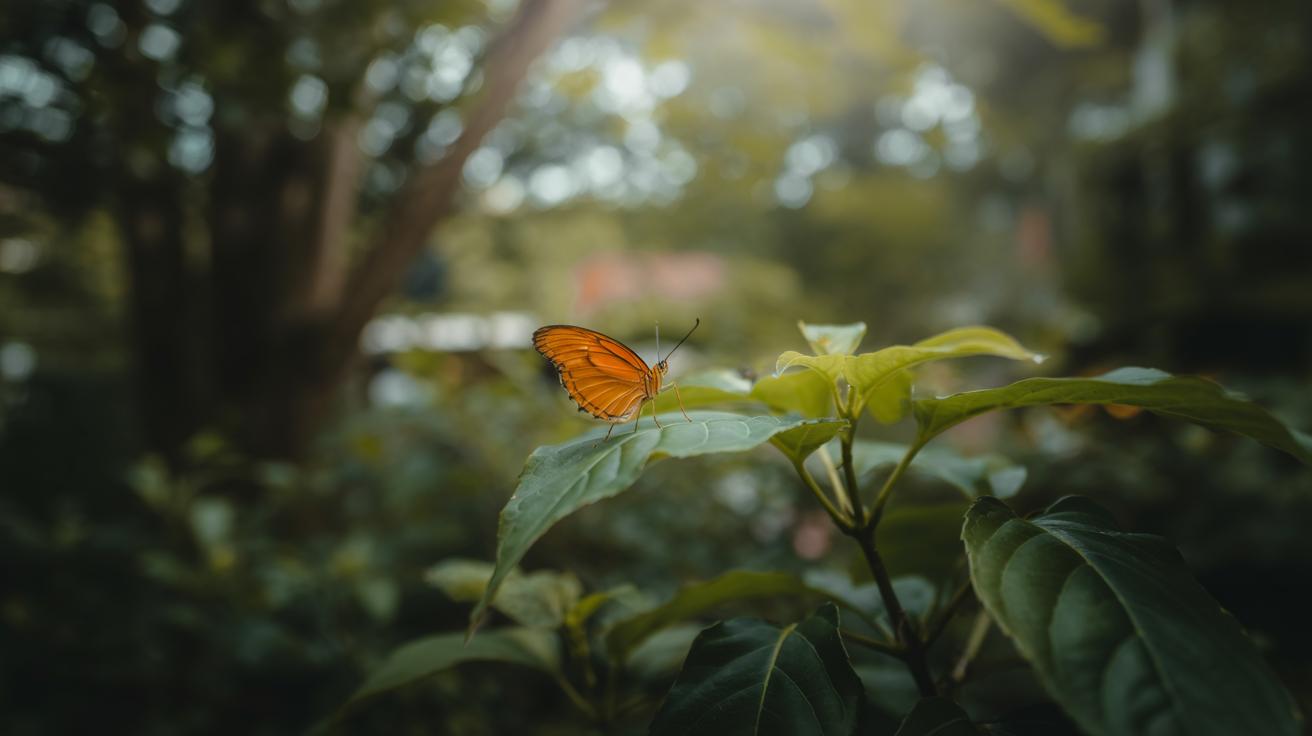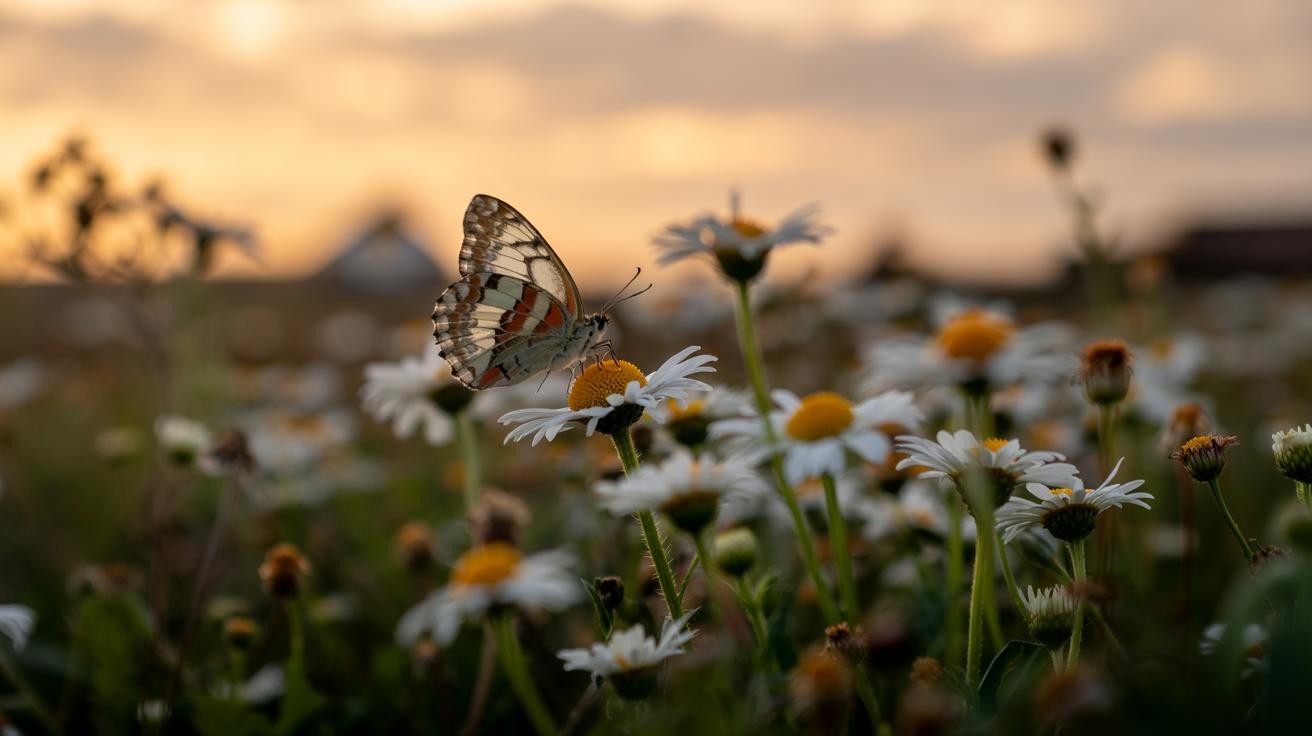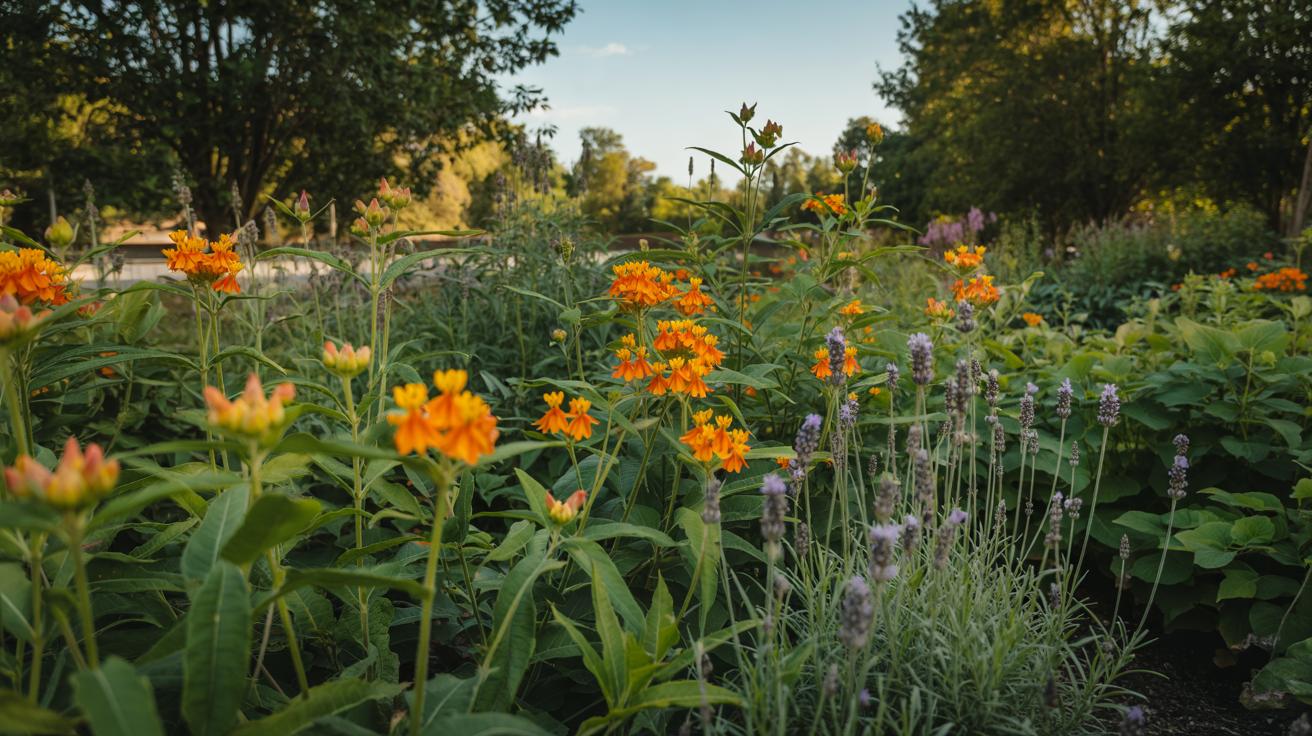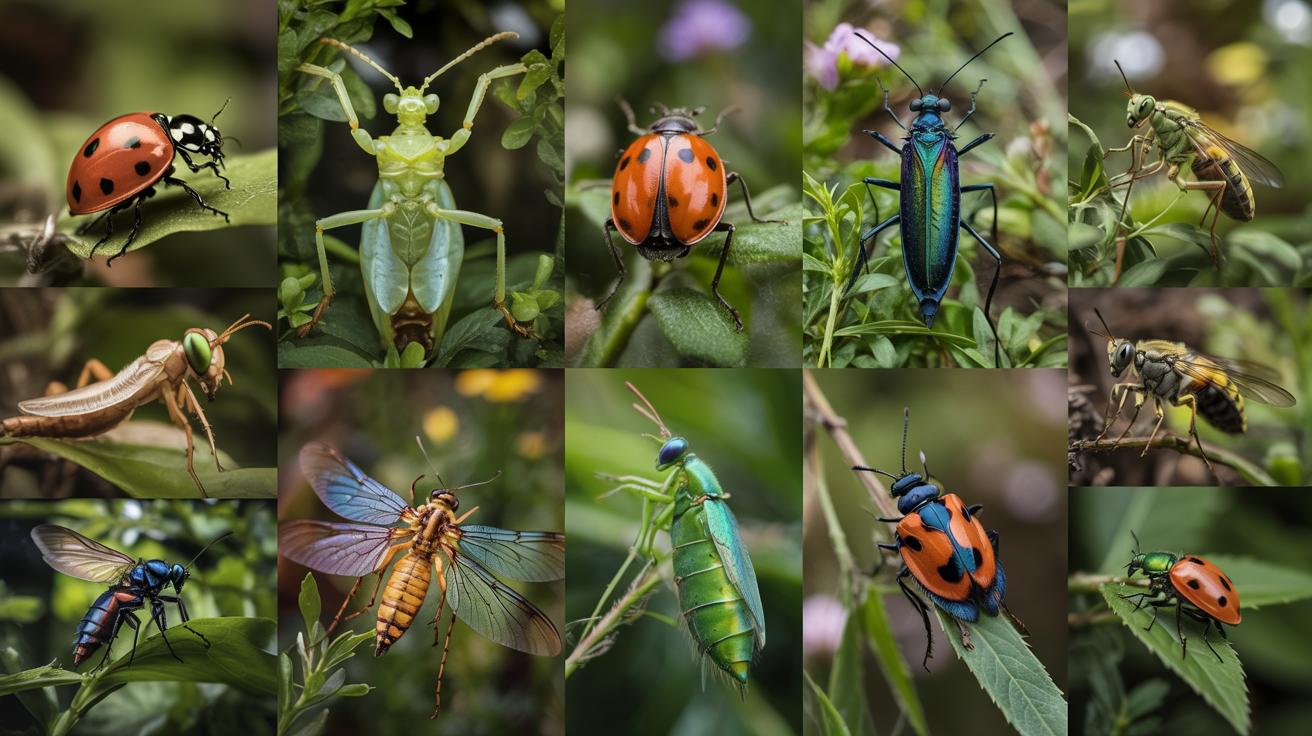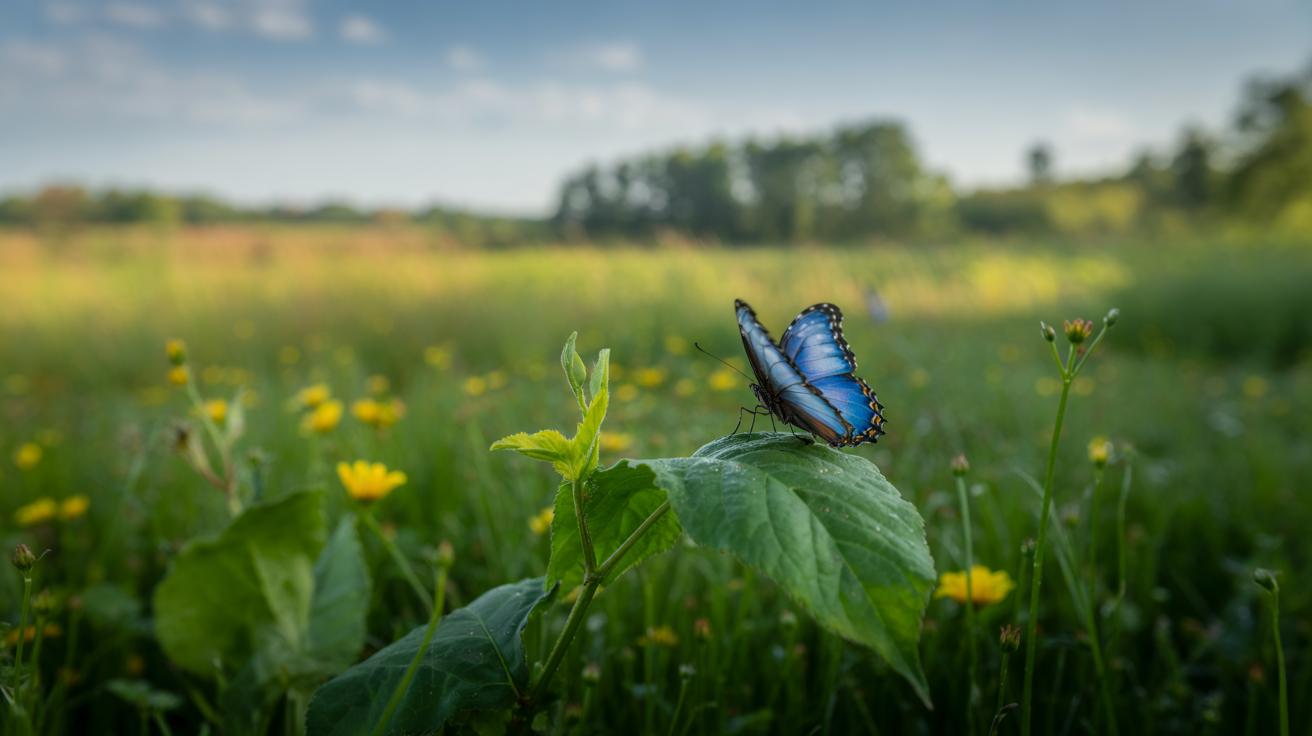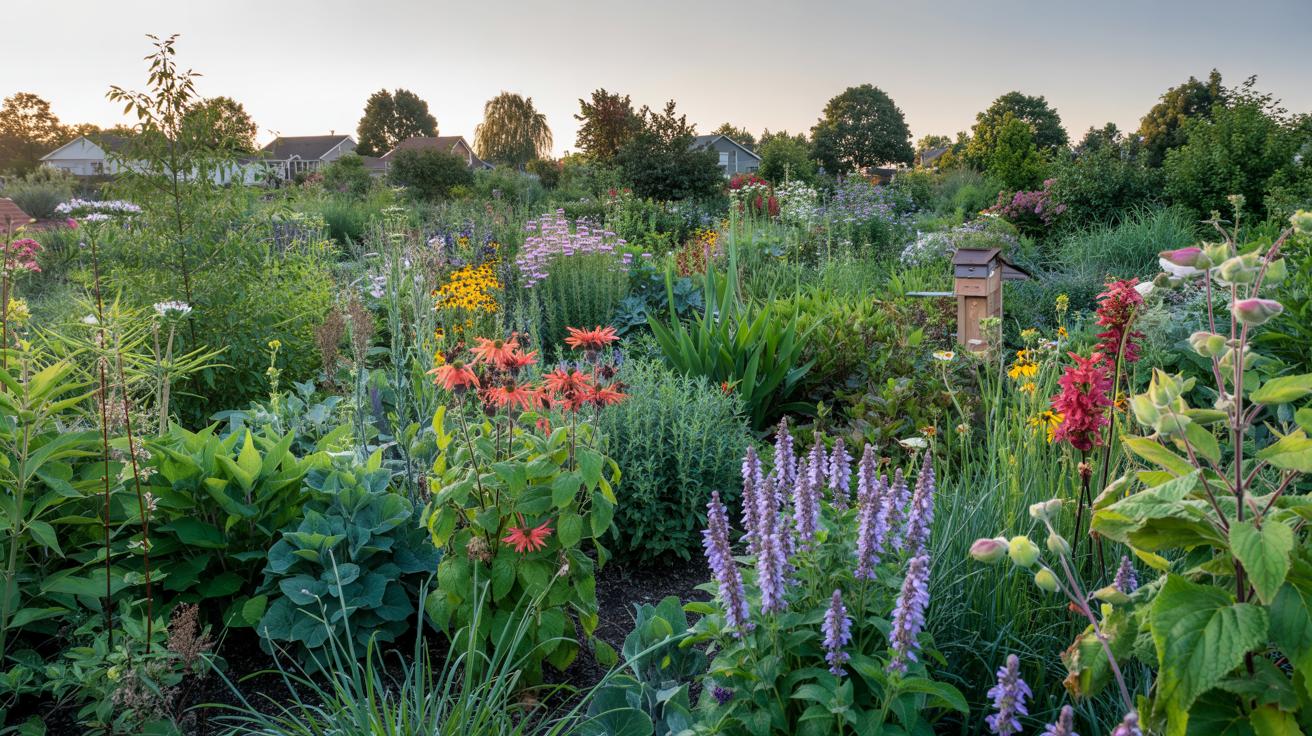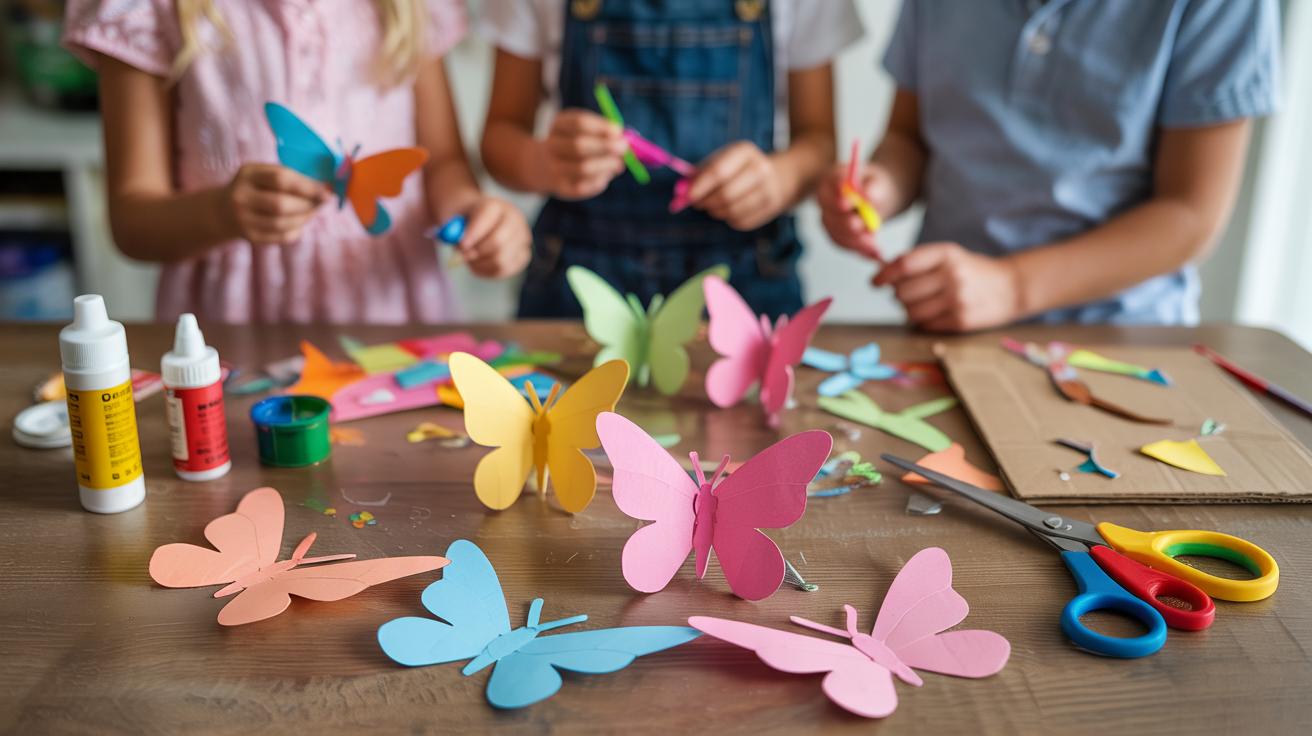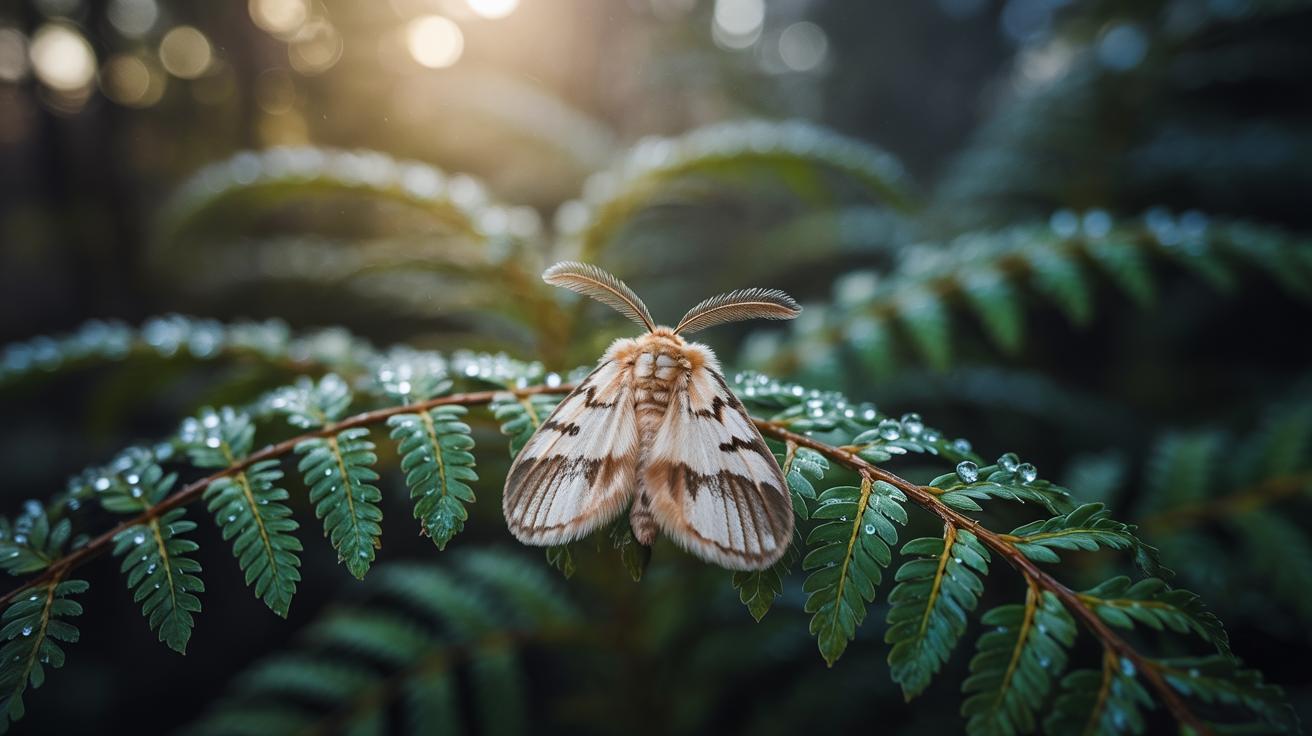Introduction
Orange butterflies catch your eye with their bright color and delicate flight. These butterflies appear in fields, gardens, and forests. They play a role in pollination and serve as indicators of a healthy environment. Identifying these butterflies helps you understand local wildlife and supports conservation efforts. This guide focuses on one of the most visually striking groups of butterflies – the orange species. You’ll learn to spot, recognize, and distinguish these butterflies.
The orange butterflies include several species such as the banded orange heliconian and the gulf fritillary. Each has unique patterns and behaviors. Recognizing differences can be tricky. This guide provides clear information about their appearance, habitat, life cycle, and behaviors to help you identify them confidently. Whether you’re a student, nature lover, or casual observer, you will find practical information to enhance your outdoor experiences with these vibrant insects.
Overview of Orange Butterfly Species
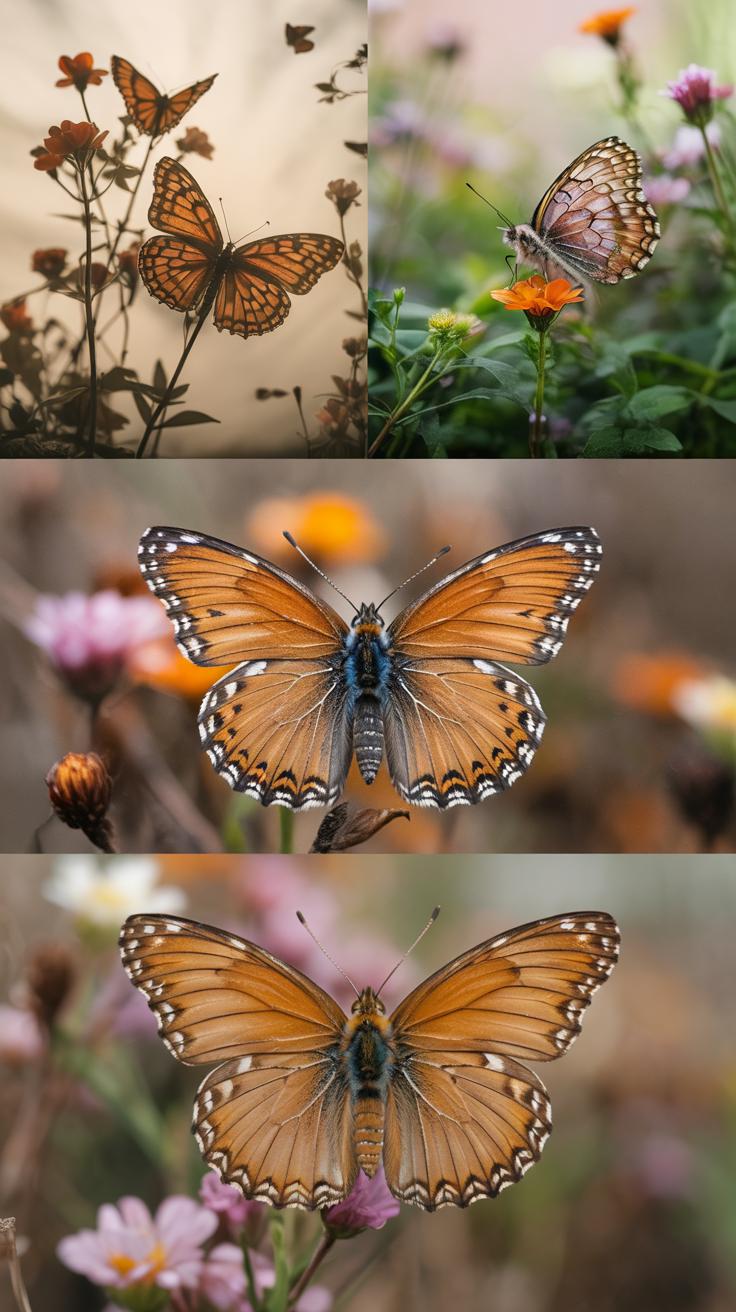
Orange butterflies catch your eye with their bright colors and bold patterns. Two common species you might spot are the banded orange heliconian and the gulf fritillary. These butterflies live mostly in North and Central America. The banded orange heliconian is usually found in open woodlands and gardens, while the gulf fritillary prefers sunny fields and forest edges.
The banded orange heliconian has orange wings marked by black bands. The gulf fritillary shows large orange wings with black spots and silver patterns under the wings. These markings help you tell them apart without a close look. If you watch carefully, you will notice the difference in the wing shapes and patterns. Observing these features helps you identify these species during walks or at your backyard butterfly garden.
Have you noticed orange butterflies in your area? Trying to spot these patterns can make your outdoor time more rewarding.
Common Orange Butterfly Species
The banded orange heliconian stretches about 3 to 3.5 inches across its wings. Its wings are bright orange interlaced with wide black bands. Male and female heliconians look alike, so you won’t see much difference in their appearance. They frequent tropical forests and open clearings from Mexico down to South America, occasionally reaching southern Texas.
The gulf fritillary measures roughly 3 inches in wingspan. It has bright orange upper wings sprinkled with black spots, while the underside shows silvery-white spots. Females often appear paler than males, showing a subtle difference in coloration. This species lives in warm climates from the southern United States through Central America. You will find them near passionflower vines, their main host plant.
Do you wonder which of these two you are likely to see more often? Consider the plants around you—passionflower vines might attract gulf fritillaries to your garden.
Significance of Orange Coloration
Why do orange butterflies wear bright colors with thick black stripes? These patterns serve as signals to predators. Bright orange warns that the butterfly might taste bad or be toxic, helping them avoid being eaten. This warning system is called aposematism.
Some orange butterflies also join mimicry groups. They copy the colors and patterns of toxic species to protect themselves, even if they are harmless. This confuses predators, increasing the butterfly’s chance to survive. For example, the banded orange heliconian’s bold stripes mimic other poisonous butterflies in the same area.
Have you thought about how color can mean safety for butterflies? Their bright colors carry messages beyond just beauty—they are survival tools.
Understanding Butterfly Anatomy for Identification
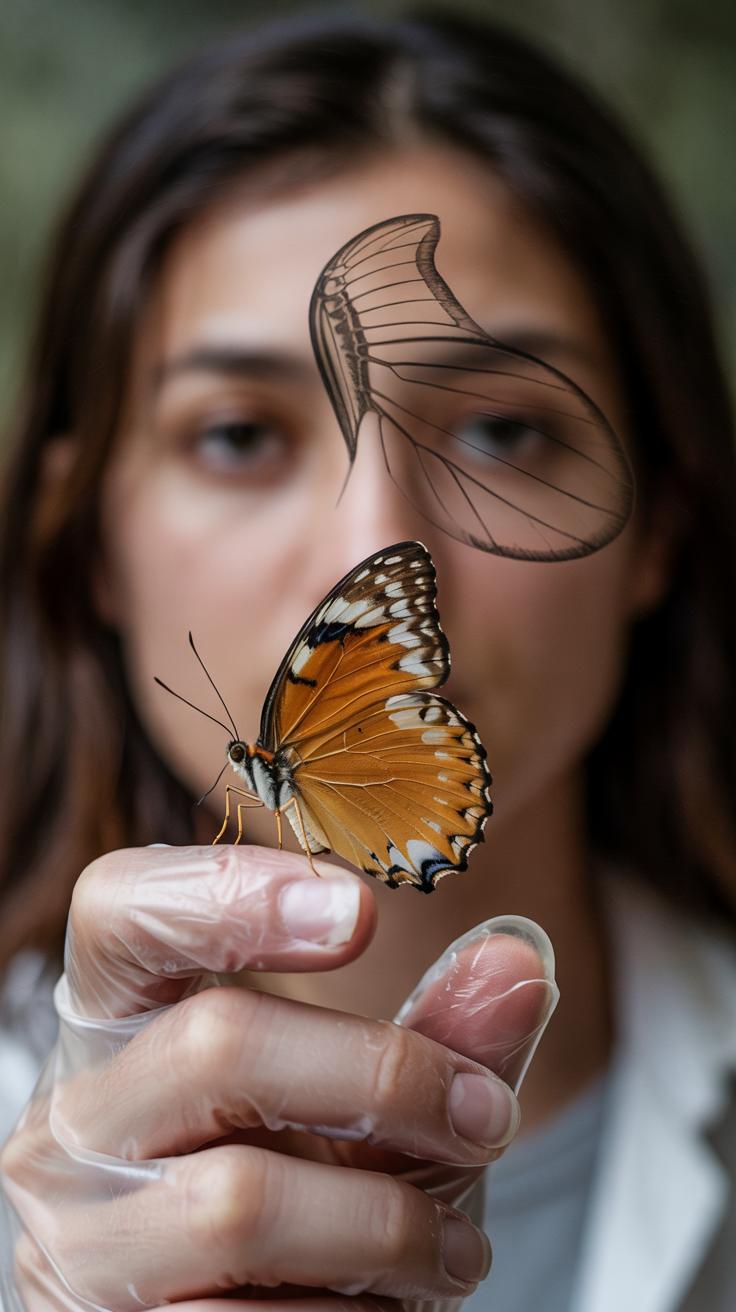
Identifying orange butterfly species requires a clear view of their anatomy. The wings are the most noticeable part to help you tell them apart. Wing shape varies: some species have rounded wings, while others show angular edges or cutouts. Size also helps; some orange butterflies are small like the Pearl Crescent, while others, like the Gulf Fritillary, have larger wings spanning several inches.
Look carefully at coloration patterns. Orange butterflies often have a mix of orange combined with black, white, or brown spots and lines. The pattern’s exact shape and distribution can signal the species. Antennae usually end in small clubs and help with balance and sensing, but their length and thickness can slightly differ among species.
The body’s structure includes a distinct head, thorax, and abdomen. Notice the size and color of the body compared to the wings. Pay attention to the legs – some have small spines or hairs that give clues to identification. Watching these features closely will sharpen your ability to recognize even similar orange butterflies in nature.
Key Features to Observe
The wing shape is a top clue when spotting an orange butterfly. For example, the Banded Orange Heliconian shows elongated forewings with pointed tips. The Gulf Fritillary’s wings are more oval with smooth edges. When you see an orange butterfly, note if the wings look rounded, scalloped, or sharply angled to narrow down your choices.
Color patterns are equally important. Watch for black or dark brown markings on the orange background. Some species show a few bold spots, while others display intricate networks of lines. The Pearl Crescent features fine black crescents along the edges, a pattern that helps set it apart.
Observe the butterfly from a distance before closer inspection. Use binoculars or a camera zoom to avoid disturbing them. Try to note how sunlight changes their color tones. Do you see bright orange or a burnt, dull shade? Such subtle changes in hues can distinguish one species from another when you are out in the field.
Sexual Dimorphism in Orange Butterflies
Male and female orange butterflies often show visible differences. Males typically have smaller or narrower wings to help with quick flight during mating. Females may have larger, broader wings to carry eggs more effectively. For example, male Gulf Fritillaries display more vibrant orange wings, while females can look paler or have smudged markings.
Patterns may vary too. In some species, males have clearer or more defined lines and spots, making their wings look sharper. Females might have more peppered or muted patterns designed for camouflage. Body coloration differs as well. Males might have brighter, hairless bodies, while females appear bulkier and sometimes duller.
When you spot an orange butterfly, try to note these differences. Ask yourself: Is this butterfly’s wing pattern sharp or faded? Is its size larger or smaller than others nearby? These questions will help you decide if you are looking at a male or female, aiding your understanding of each species’ behavior and role in nature.
Habitats and Distribution
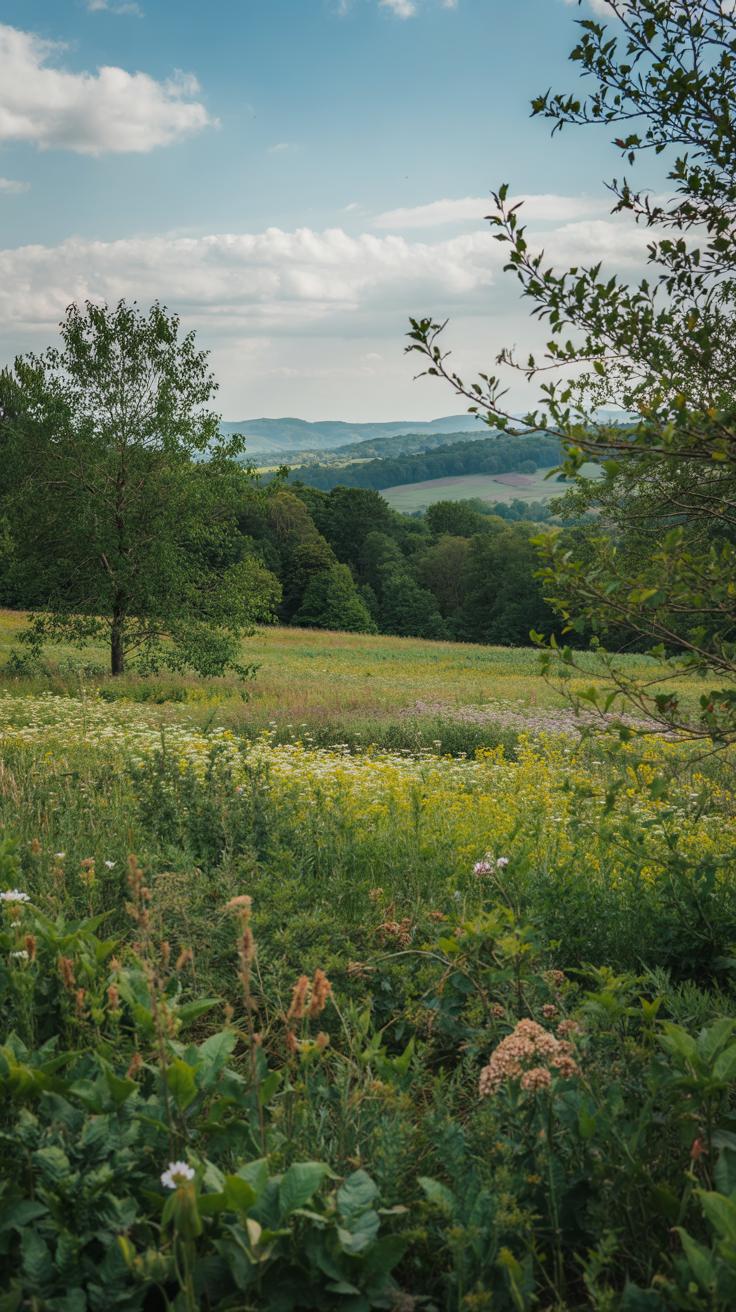
Orange butterflies live in many environments, ranging from tropical rainforests to temperate meadows. Many species prefer open spaces filled with sunlight. These include lowland tropical fields, valleys, gardens, and parks where nectar plants grow abundantly. You might find orange butterflies fluttering around near wildflowers or flowering shrubs because these provide crucial food sources.
Temperature and humidity also affect where they thrive. They often favor warm climates with moderate moisture, which supports the growth of host plants their caterpillars feed on. Have you noticed orange butterflies more in sunny, flower-rich spots? This shows how food and climate together determine where these butterflies settle.
Orange butterflies are usually widespread but their presence changes depending on the season. Some species expand their range during summer, moving to cooler areas temporarily. For example, the Monarch butterfly, known for its orange wings, travels thousands of miles from southern US to Canada during warmer months. Other species may pop up briefly in parts of Europe or Asia where they don’t normally live. What drives these shifts? Food availability and breeding needs often push them to explore new territories before returning to their usual homes.
Preferred Natural Environments
Many orange butterflies prefer habitats offering a mix of flowers and warmth. Lowland tropical fields provide a wide variety of nectar plants. Valleys can create microclimates that trap heat, suiting these butterflies well. Gardens and parks planted with native flowering plants attract orange butterflies regularly. You might spot them resting on bright marigolds or zinnias.
Butterflies need host plants for their larvae, so the presence of specific flowers plays a big role in their habitat choice. Climate influences how many generations they produce each year. For instance, in warmer climates, orange butterflies might breed several times annually, while cooler areas allow only one or two. Your local garden can become a haven if it provides what butterflies need at each stage of their life.
Range and Migration Patterns
Some orange butterfly species stay where they were born all year, but others migrate seasonally. Summer months often see their range expand northward or to higher altitudes. This movement allows them to find fresh food sources and suitable breeding grounds when their usual habitats become hot or dry.
You may notice a species appearing in a new area only for a short time before disappearing again. This can happen when they follow migrating flowers or weather shifts. Monarch butterflies show the most famous example, crossing great distances. Less-known orange butterflies might also make brief journeys, appearing in gardens far outside their normal range. Ever wondered why a specific butterfly visits your garden only during summer? Migration can explain these unexpected appearances.
Life Cycle of Orange Butterflies
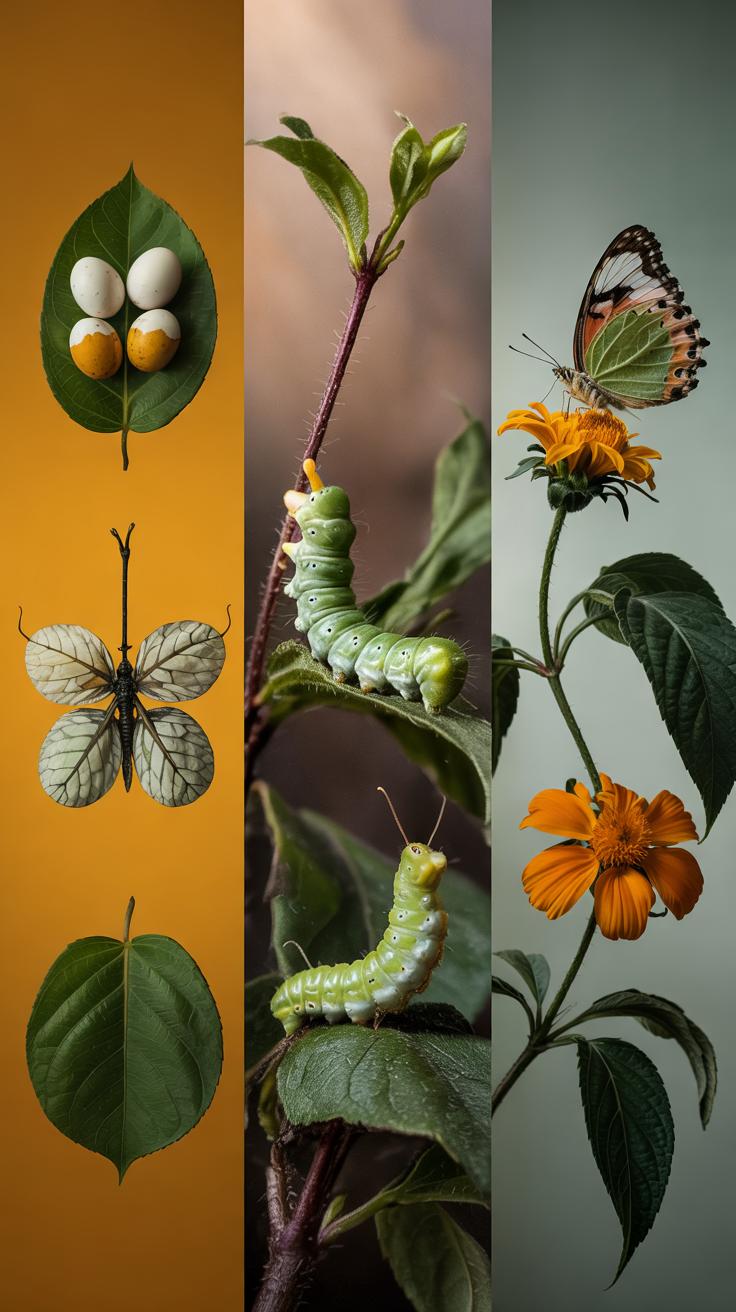
The life of an orange butterfly begins with the egg stage. Females carefully lay eggs on specific host plants to give caterpillars the best chance to thrive. These eggs are tiny, often resembling small dots on the leaf surface.
Once hatched, the caterpillar emerges. Caterpillars of orange butterfly species usually have distinctive color patterns and spines that change as they grow. Their main food source often includes passion vines, which provide the nutrients needed for development. Some species may prefer different host plants, but passion vines are common across many orange butterflies.
The caterpillar eats continuously, storing energy for the next stage. Nutrition is critical here; insufficient feeding can halt development. As the caterpillar reaches full size, it prepares for transformation into a chrysalis.
Early Development Stages
Female orange butterflies pick leaves mostly from passion vines to lay their eggs. This choice helps caterpillars access suitable food right after hatching. The eggs usually appear singly rather than in clusters which reduces competition among siblings.
Caterpillars display bright colors like black and white stripes or spots and sometimes have small spikes along their bodies. These features can warn predators or camouflage the caterpillar on the host plant.
Feeding is focused on leaves of specific vines. The caterpillars require fresh, healthy leaves to absorb key nutrients. If you observe caterpillars on passion vines eating regularly, you are likely witnessing the critical growth phase of an orange butterfly species.
Metamorphosis and Adult Emergence
The caterpillar forms a chrysalis by shedding its skin one last time. The chrysalis attaches to a leaf or branch, blending well with its surroundings. Inside, the caterpillar undergoes metamorphosis, converting into an adult butterfly.
During metamorphosis, wing colors develop from dull shades to the vibrant oranges and blacks familiar to you. The wings harden and stretch before the butterfly emerges. This process takes days to weeks depending on the species and environment.
When the adult butterfly comes out, the wings look fragile but soon they expand and solidify, preparing the butterfly for flight and feeding. Observing this change can reveal differences even among similar orange butterfly species, such as size and shade variations that help with identification.
Behavior and Interaction with Environment

Orange butterflies often visit flowers to drink nectar, their main energy source. Nectar provides sugars they need to fly and reproduce. Sometimes, you might see them gathering on wet soil or near animal droppings, a behavior known as mud-puddling. Here, they absorb minerals like sodium that nectar lacks but are vital for their survival. These minerals help in muscle function and reproduction.
When threatened, some orange butterflies produce chemicals that taste bad to predators. This defense makes birds and other insects avoid them. These chemicals often come from the plants the caterpillars ate, showing how feeding habits affect adult defenses.
You might notice orange butterflies interacting with other species, like ants or spiders, either avoiding them or, rarely, sharing space. How do you think these behaviors impact where they live and thrive? Understanding these habits can help you recognize and protect these butterflies in their natural habitat.
Feeding and Nutritional Habits
Adult orange butterflies mainly feed on flower nectar. Different species prefer specific flowers, but they all seek nectar for energy. Nectar supplies simple sugars that fuel their flying and mating activities.
Occasionally, these butterflies land on moist soil or near damp animal waste to collect minerals. These minerals, especially sodium, improve their survival and fertility. Without these nutrients, you might notice weaker or less active butterflies.
Some species gather in groups during mud-puddling, increasing their intake of essential salts. These nutrients help males produce pheromones for attracting mates. Have you seen mud-puddling gatherings in your area? Observing this can add to your understanding of their feeding routines.
Mating Behavior and Territory
Male orange butterflies often release pheromones to attract females. They might gather in specific areas, like mud puddles, where females visit to select mates. This spot becomes a meeting place for courtship.
Territory defense is common among males. They chase away rivals to keep good locations that attract females. This competition can include aerial battles or displays to show strength.
Courtship involves wing fluttering and close approach. Males use scents to signal quality. When watching butterflies, notice how males behave differently in groups versus alone. What strategies do you think work best for attracting females? Understanding these behaviors helps you identify breeding grounds for various orange butterfly species.
Methods for Observing and Photographing Orange Butterflies
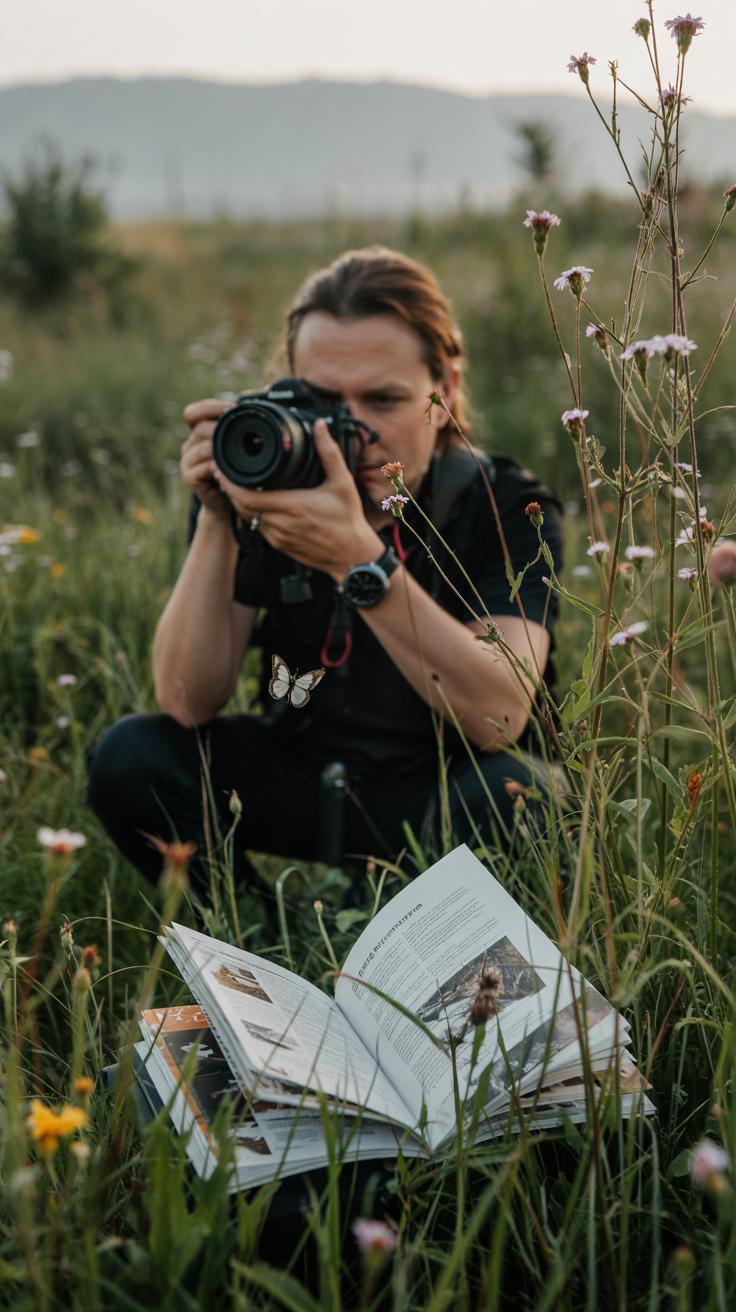
Watching orange butterflies takes patience and respect for their natural behavior. Choose clear, sunny days when these butterflies are most active. Early mornings, after dew has dried, or late afternoons offer the best light and cooler temperatures that slow their flight. You’ll find them near wildflowers, edges of woodlands, and sunny gardens where nectar is abundant.
Move slowly and avoid sudden movements. Butterflies sense vibrations and quickly fly away if startled. Stay about three to five feet away to avoid intrusion. Approach from the side or below rather than head-on, as this lowers the chance of disturbing them. Observe which flowers or plants they visit often and wait quietly nearby for an opportunity to study them closely.
Observation Tips for Beginners
Start by learning butterfly flight patterns. Many orange butterflies bounce between flowers in a circuit. Watching small loops allows you to predict where they will land next. Hold still once you spot one landing on a flower and focus on small details like wing shape and markings.
Pick sunny days as butterflies need warmth to stay active. Shade and wind reduce chances to see them up close. Always give butterflies space by keeping a safe viewing distance. Moving slowly and relaxing your body helps, too. Crouch or kneel if needed, but avoid coming from above to prevent startling them.
Photography Techniques
Capturing vibrant wings requires steady focus and good lighting. Use your phone’s macro mode or a camera with a close-up lens to reveal fine wing details. Natural light works best. Position yourself so the sun lights the butterfly from behind or the side, making colors pop without glare.
Keep the background simple and uncluttered to make the butterfly stand out. Focus directly on the eyes or wing edges for sharper images. Take multiple shots to increase your chances of clear photos. Experiment with angles, but don’t get too close to avoid scaring them away. Patience leads to the best close-ups of these colorful insects.
Using Field Guides and Apps for Identification
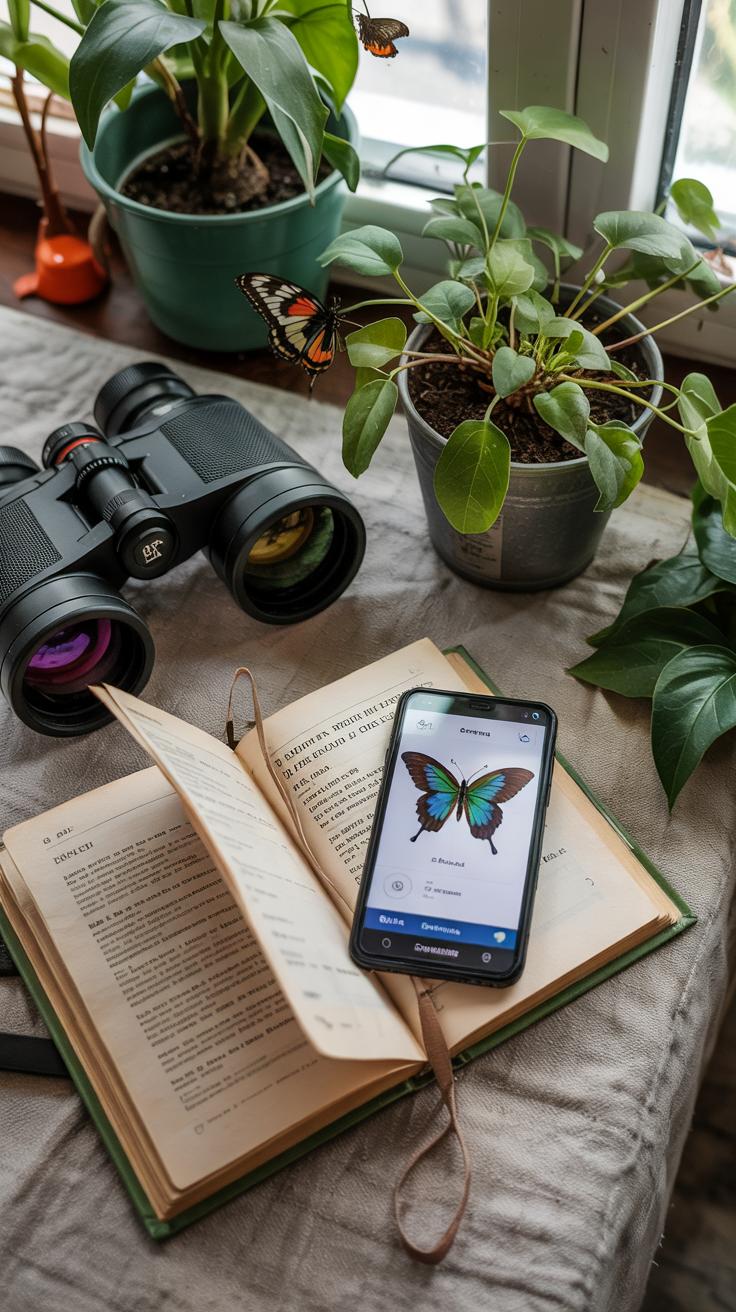
When you spot a bright orange butterfly, you want to identify it quickly and accurately. Field guides and mobile apps can help you do just that. A good field guide puts detailed information right in your hands. It shows clear pictures of butterflies from different angles and stages of life. Color plates separate species by their unique patterns and shades of orange. Comparison charts let you spot subtle differences between similar species. Distribution maps reveal where specific butterflies live, guiding you to expect certain species in your area. Life cycle notes inform you of the best time to find adults or caterpillars. Using these features together can turn your curiosity into knowledge.
What about technology? Digital tools make butterfly identification easier wherever you are. Apps like Seek by iNaturalist, LepSnap, and Picture Insect use image recognition to suggest possible matches from your photos. They also use your location to narrow down species likely to appear nearby. Some apps connect users worldwide, letting you join butterfly-watching communities. Sharing photos and sightings on these platforms helps you learn from others and contribute to science. Combining field guides with these apps gives you a thorough way to identify orange butterflies, whether you’re in your backyard or on a hiking trail.
Features of Effective Field Guides
Clear images matter most. You need detailed photos showing the butterfly’s wings both open and closed. Color plates should display many species side by side to compare their orange hues and markings easily. Comparison charts focus on specific traits like wing shape or spots, helping you tell close relatives apart.
Knowing where butterflies live is key. Distribution maps in the guide tell you which species show up in your region and at different times of year. Including lifecycle details, like when caterpillars or adult butterflies appear, improves your chances of catching them at the right moment. Good guides also explain what plants the butterfly uses for food and laying eggs. This clues you into where to look in nature.
Digital Tools and Apps
Seek by iNaturalist identifies butterflies by analyzing your photos. It shows you possible matches and confirms species based on your location and time of year. If you’re unsure, other users can help with suggestions.
LepSnap specializes in butterflies and moths. You snap a photo, and LepSnap compares it to a large database to find the best fit. It’s handy for beginners and experts alike.
Picture Insect goes beyond identification by including lifecycle information and distribution maps within the app. It tracks your butterfly sightings over time and can highlight rare species nearby.
Have you considered how connecting with a community might deepen your learning? Many apps let you join groups where you can ask questions and share discoveries. These tools make fieldwork interactive and informative, helping you identify orange butterflies with confidence.
Conservation and Environmental Importance
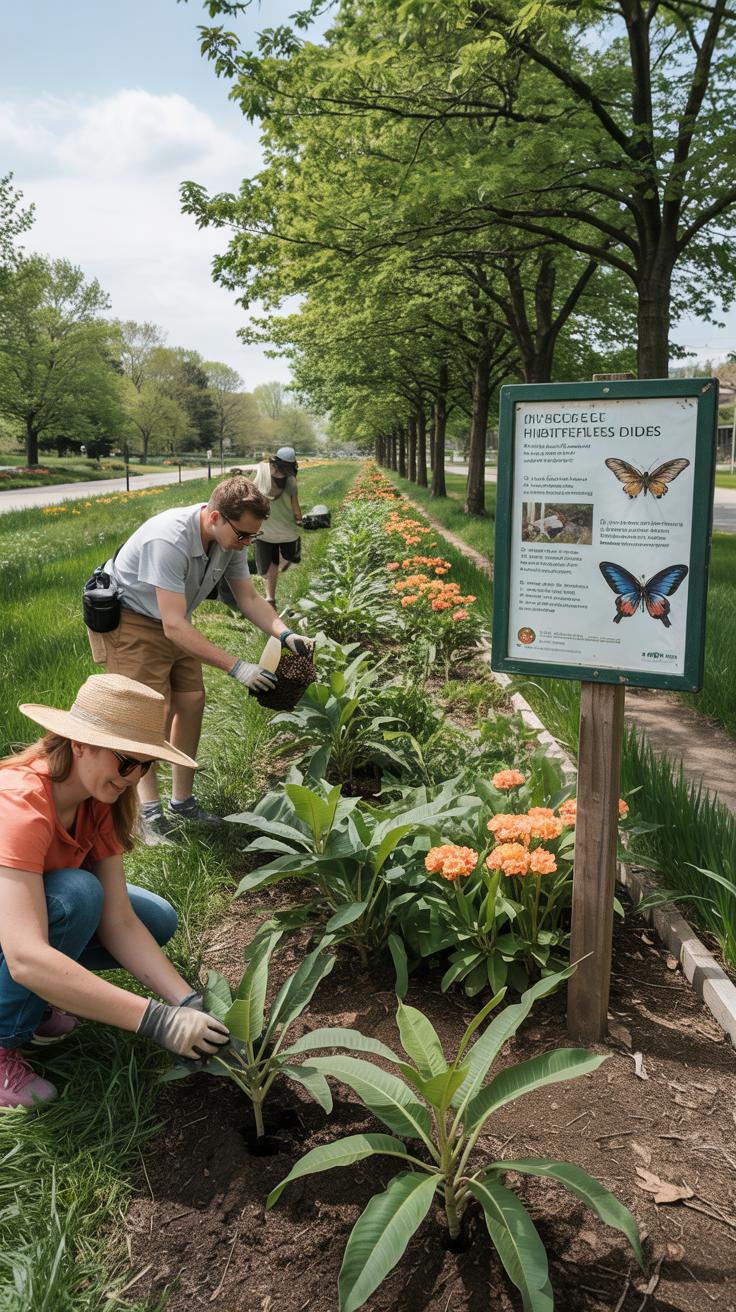
Orange butterfly species play a key role in many ecosystems. They help pollinate wildflowers, supporting plant reproduction and food sources for other animals. Some species also serve as food for birds and insects, balancing the local food web. Protecting these butterflies means supporting entire habitats.
Many orange butterflies face threats that put their survival at risk. Some species are now listed as vulnerable or endangered due to rapid environmental changes. Your awareness about their decline can encourage actions that help protect them. Have you noticed fewer butterflies in your area recently? This change matters in the larger environmental picture.
Conservation efforts focus on preserving natural habitats and reducing harmful human impacts. Supporting programs that protect butterfly reserves or wildflower meadows benefits orange butterfly populations. Your choices for a butterfly-friendly garden can contribute to this work. Small actions can lead to big differences in conserving vibrant butterfly species.
Threats to Orange Butterflies
Habitat loss is one of the biggest dangers to orange butterflies. When forests and fields turn into farms or cities, butterflies lose places to live and find food. For example, the Monarch butterfly’s habitats have shrunk by over 80% in some regions, impacting their numbers sharply.
Pesticides also harm butterfly populations. Chemicals used on crops and gardens can kill caterpillars or adult butterflies directly. Local species like the Painted Lady have shown declines linked to increased pesticide use. How often do you think about the chemicals around plants where butterflies might feed?
Climate change changes weather patterns, affecting when flowers bloom and butterfly life cycles. Some orange butterflies struggle to adjust, missing key times for feeding or breeding. In some states, warmer winters cause early emergence, leading to mismatches in food availability. These shifts make survival harder.
How You Can Help
You can make a difference by planting native flowers in your yard or community spaces. Native plants support caterpillars and provide nectar for adult butterflies. Choices like milkweed for Monarchs or violets for Fritillaries create vital food sources.
Avoiding pesticides in your garden protects butterflies from poison. Seek natural pest control methods or accept some plant damage to save these insects. Supporting local butterfly gardens or reserves by volunteering or donating helps protect wild populations and their habitats.
Consider asking your school or neighbors to start butterfly-friendly projects. Small areas filled with host and nectar plants become safe spots for orange butterflies to thrive. What small change will you make today to help these colorful species survive and grow?
Frequently Asked Questions

Common Identification Challenges
Orange butterflies often look similar to each other, making it tricky to tell one species from another. You may see slight differences in the patterns on their wings or in the shades of orange they display. Watch for wing shape and size, too. Some species have more rounded wings while others appear sharper or more elongated.
Checking the underside of the wings can help. Many orange butterflies show different colors or markings there. Observing during different lighting conditions can reveal subtle differences you might miss at first glance. Patience in watching their flight patterns may also aid identification, as some species fly faster or more erratically than others.
Try taking notes or photos to compare with a trusted guide. Focus on small details like spots, lines, or the presence of black edges. These tips can reduce confusion when identifying orange butterflies in the field.
Understanding Butterfly Behavior
Orange butterflies live for about two to four weeks as adults. During this time, they focus on feeding, mating, and laying eggs. You might notice that they are more active in warm, sunny weather since they depend on warmth to fly.
Many orange butterflies appear during specific seasons, usually spring and summer. Their life cycle aligns with the blooming of flowers they feed on. Some species migrate, traveling long distances to find suitable habitats. Others remain in one place year-round if conditions stay favorable.
You may wonder how orange butterflies avoid predators. Their bright colors can signal bad taste to birds, or they may blend with orange flowers as camouflage. Watching their interactions with ants or spiders shows how they stay alert to threats. By observing these behaviors, you learn more about their survival strategies in your garden or local park.
Conclusions
Orange butterflies offer more than just beauty. They contribute to ecosystem balance by pollinating flowers. Their presence signals a biodiverse and healthy environment. Knowing how to identify species like the banded orange heliconian or gulf fritillary improves your connection to nature. You become aware of the delicate interactions between plants and wildlife. This knowledge supports protective actions in natural habitats. Observing these butterflies can deepen your appreciation for insects and their importance in nature.
Identification skills grow stronger with practice. Use this guide to observe orange butterflies closely. Note the colors, wing shapes, and markings. Consider their habitats and behaviors. These details help you identify species accurately. Spending time in nature with a focused eye can be rewarding. Do you feel inspired to find and identify orange butterflies near you? Your efforts contribute to a greater understanding of butterfly populations and promote conservation awareness. Keep exploring and observing to discover the world of orange butterflies fully.


